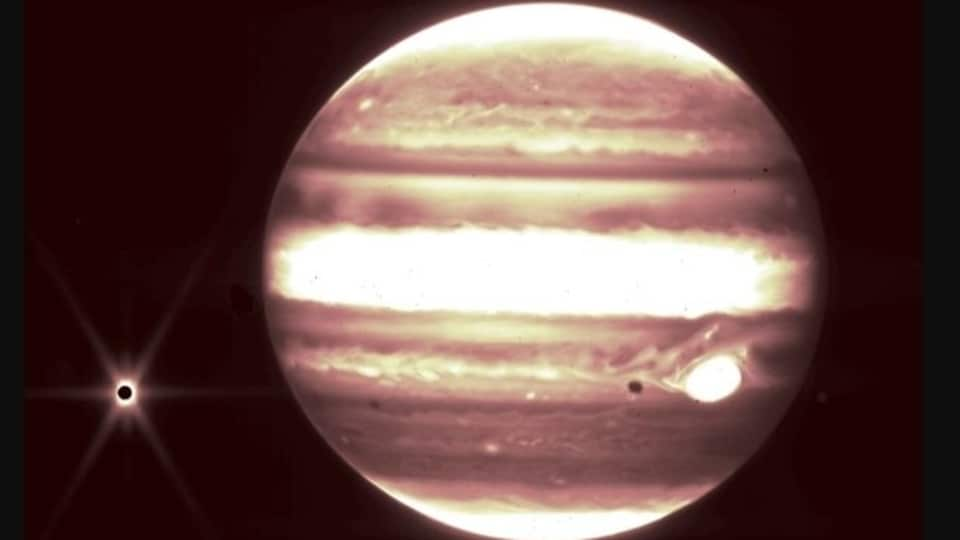James Webb Space Telescope captures glowing Jupiter in its infrared gaze
James Webb Space Telescope has captured Jupiter center, and its moon Europa via its NIRCam instrument 2.12 micron filter.

NASA's James Webb Space Telescope (JWST) has been astonishing us by sharing glimpses of stars, planets, and galaxies while studying the solar system. This time JWST has captured an image of glowing Jupiter in its infrared gaze. The black and white image shows Jupiter glowing in the dark, highlighting its Red Spot in bright White. According to Nasa, the raw image was captured by using the telescope's Near Infrared Camera (NIRCam) instrument. Jupiter's rings stand out in the NIRcam long-wavelength filter image. It shows distinct bands encircling the planet as well as the Great Red Spot, and a storm big enough to swallow two or three Earths.
John Stansberry, observatory scientist and NIRCam commissioning lead at the Space Telescope Science Institute, said that the planet's images in the narrow-band filters provide nice images of the entire disk of the planet. He shared, “the wealth of additional information about very faint objects (Metis, Thebe, the main ring, hazes) in those images with approximately one-minute exposures was absolutely a very pleasant surprise.”
The new images are proof that James Webb Telescope can capture the satellites and rings near bright solar system objects like Jupiter, Saturn, and Mars. It will help researchers to explore the plumes of material spewing out of moons like Europa and Saturn's moon Enceladus. “I think that's just one of the coolest things that we'll be able to do with this telescope in the solar system,” said Stefanie Milam, Webb's deputy project scientist for planetary science at NASA's Goddard Space Flight Center in Greenbelt, Maryland.
According to NASA, the James Webb telescope has been designed in a way that can track objects moving as fast as Mars i.e, maximum speed of 30 milliarcseconds per second. “It's really exciting to think of the capability and opportunity that we have for observing these kinds of objects in our solar system,” added Milam.
Catch all the Latest Tech News, Mobile News, Laptop News, Gaming news, Wearables News , How To News, also keep up with us on Whatsapp channel,Twitter, Facebook, Google News, and Instagram. For our latest videos, subscribe to our YouTube channel.































